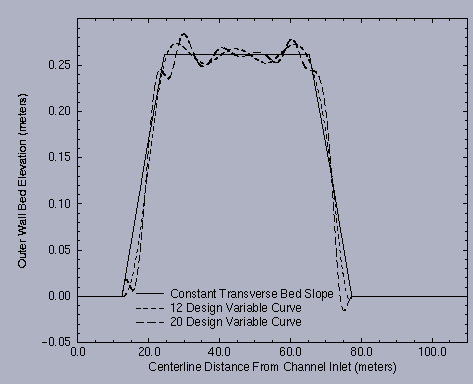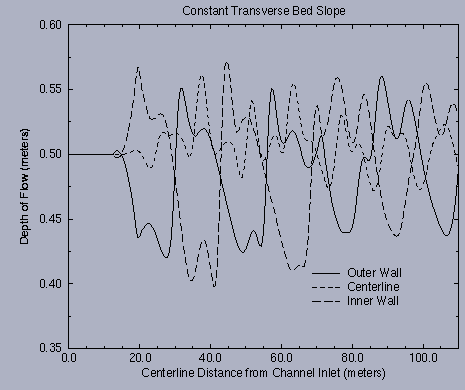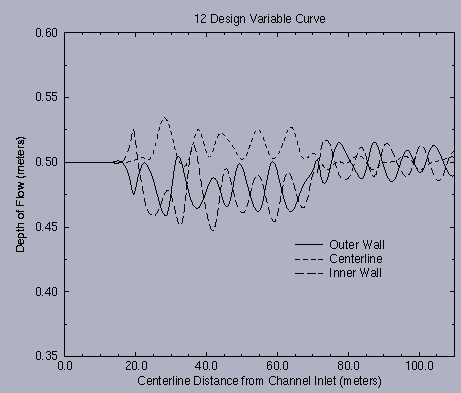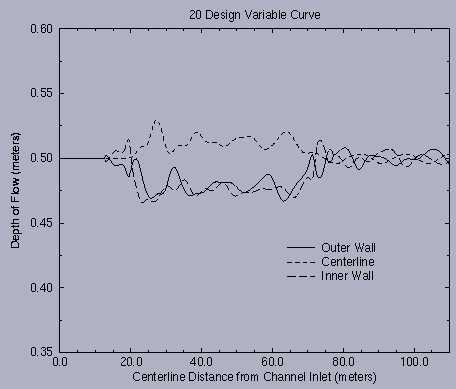Straight Wall Contraction Problem
In a straight wall contraction, one set of waves is produced. By choosing the correct contraction length, these waves will strike the opposite wall at the end of the contraction and cancel with the waves being generated. Thus, this design problem had only one design variable, and the method of steepest descent was used to update the design variable based on the design space derivative.

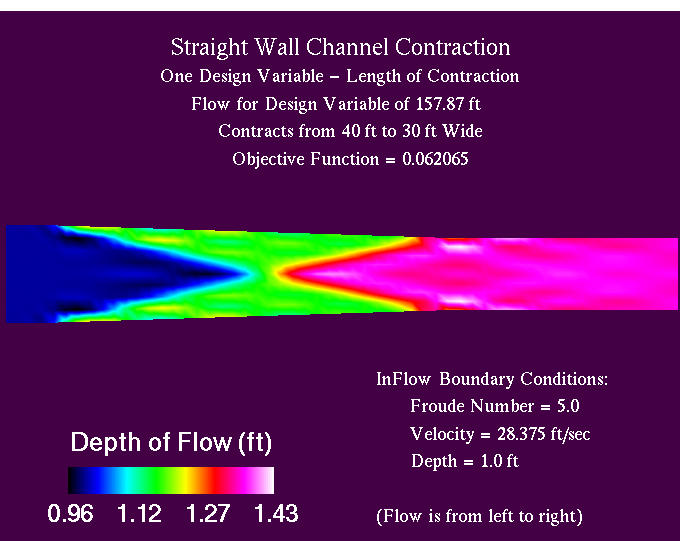
Curved Wall Contraction Problem
When there is not enough length of channel to use the optimal channel length straight
wall contraction, a curved wall contraction can be used to produce level
downstream flow. In a curved wall contraction, multiple waves with various
strengths are generated. They interact in a highly nonlinear fashion, which may
be too difficult to calculate analytically. By using a proper combination of
these waves, nice, level flow can be produced. The same channel characteristics
are used in this problem as in the one shown above.
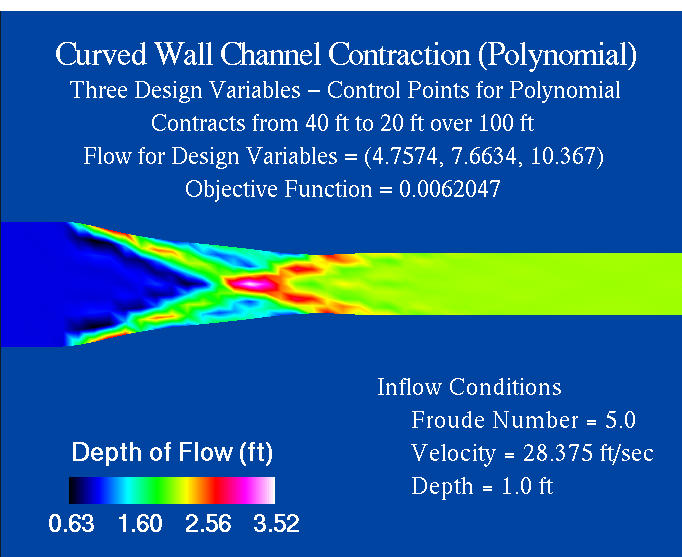
Circular Channel
In a channel bend, the channel bend is ramped going across the channel in order
to generate level flow throughout the channel. This ramping is quite similar to
the sloping of a road around a sharp bend. In a sense, the centripetal force of
the flow that wants to carry the flow in a straight line is acted upon by a
gravity force in the transverse bed slope. By balancing the two forces, the
flow can move around the bend evenly.
One difficulty of this design problem is the approach ramp and the exit ramp
design. By modifying the transverse slope for a region above and below the bend
as well as through the bend, level flow can be produced throughout the bend. In
the images shown below, the bed elevations are plotted for the constant bed
slope problem, for a 12-design variable problem and for a 20-design variable
problem. The resulting flows through these channels are then presented. We can
clearly see that the flows for the optimized designs are much more level than
for the constant bed slope problem. Also, the flow for the 20-design variable
problem hase fewer wiggles than the 12-design variable flow.
